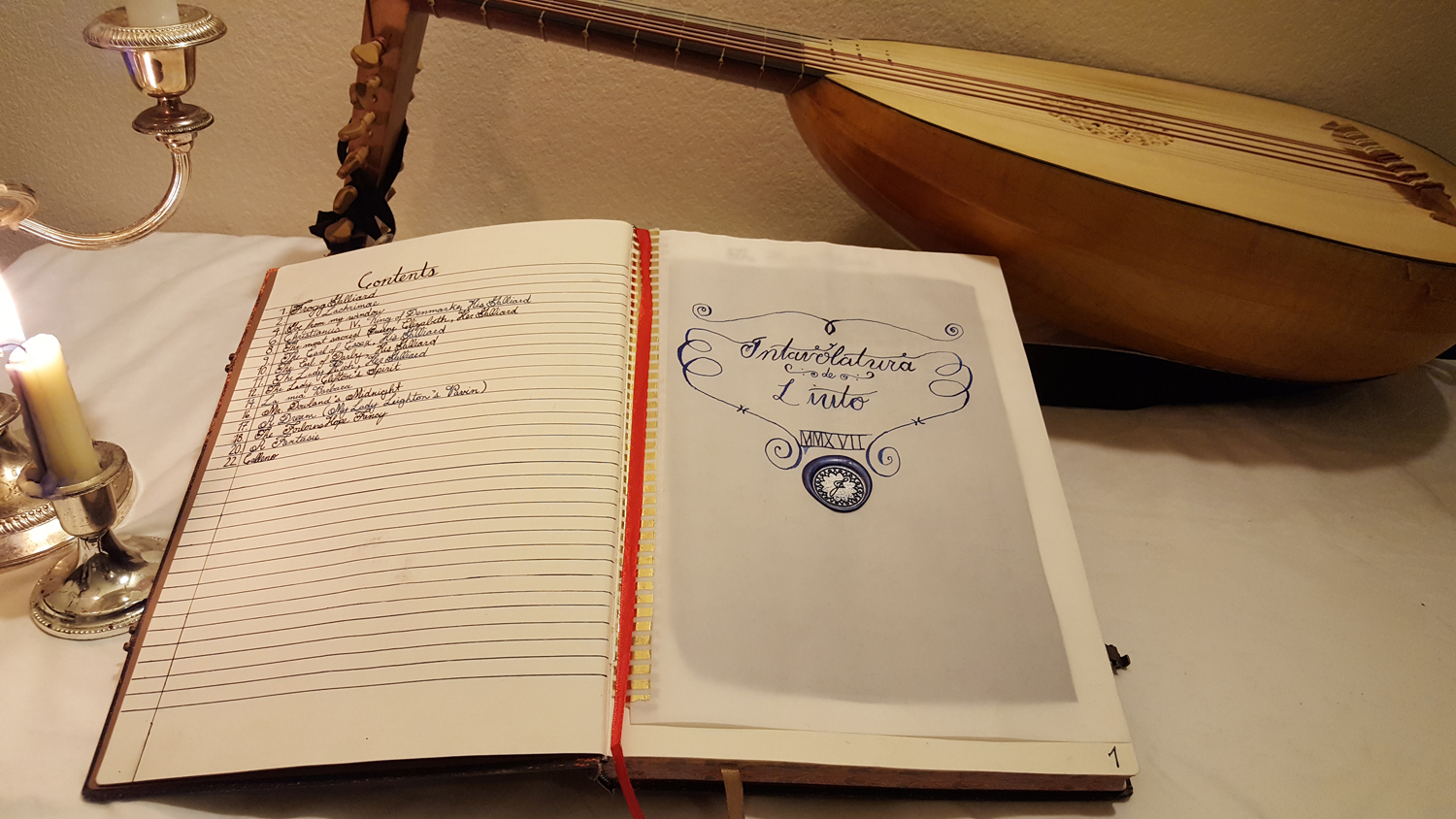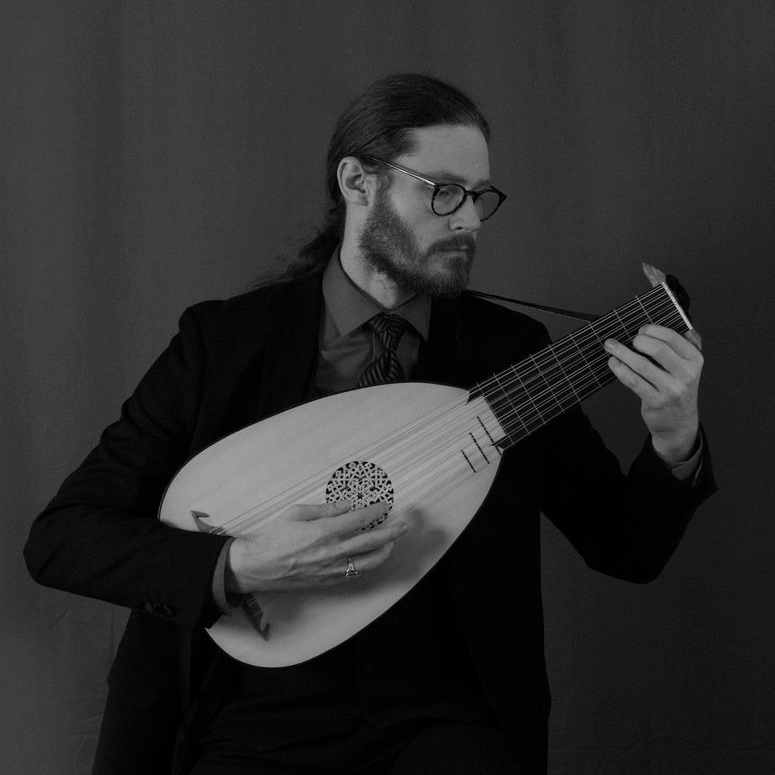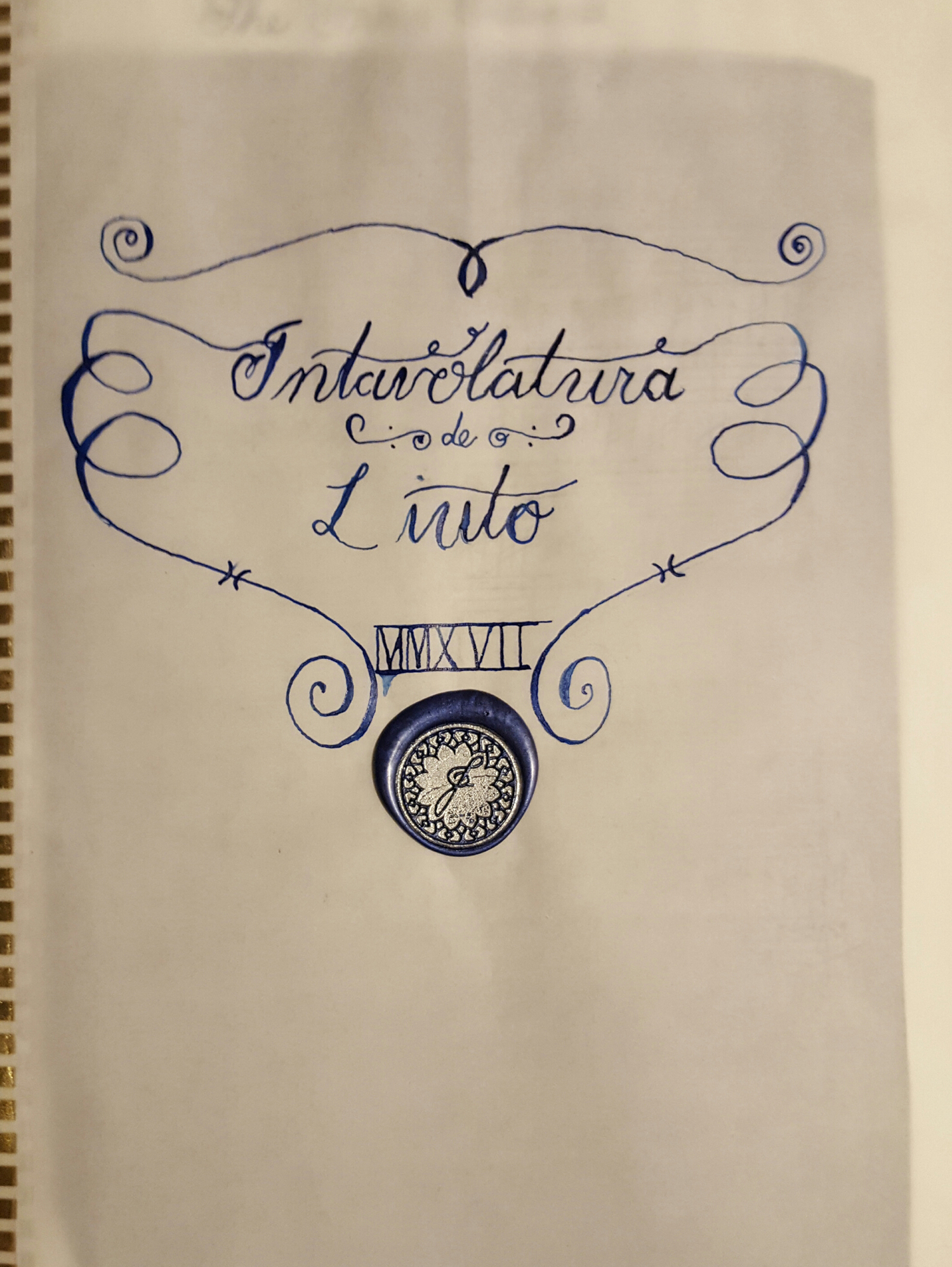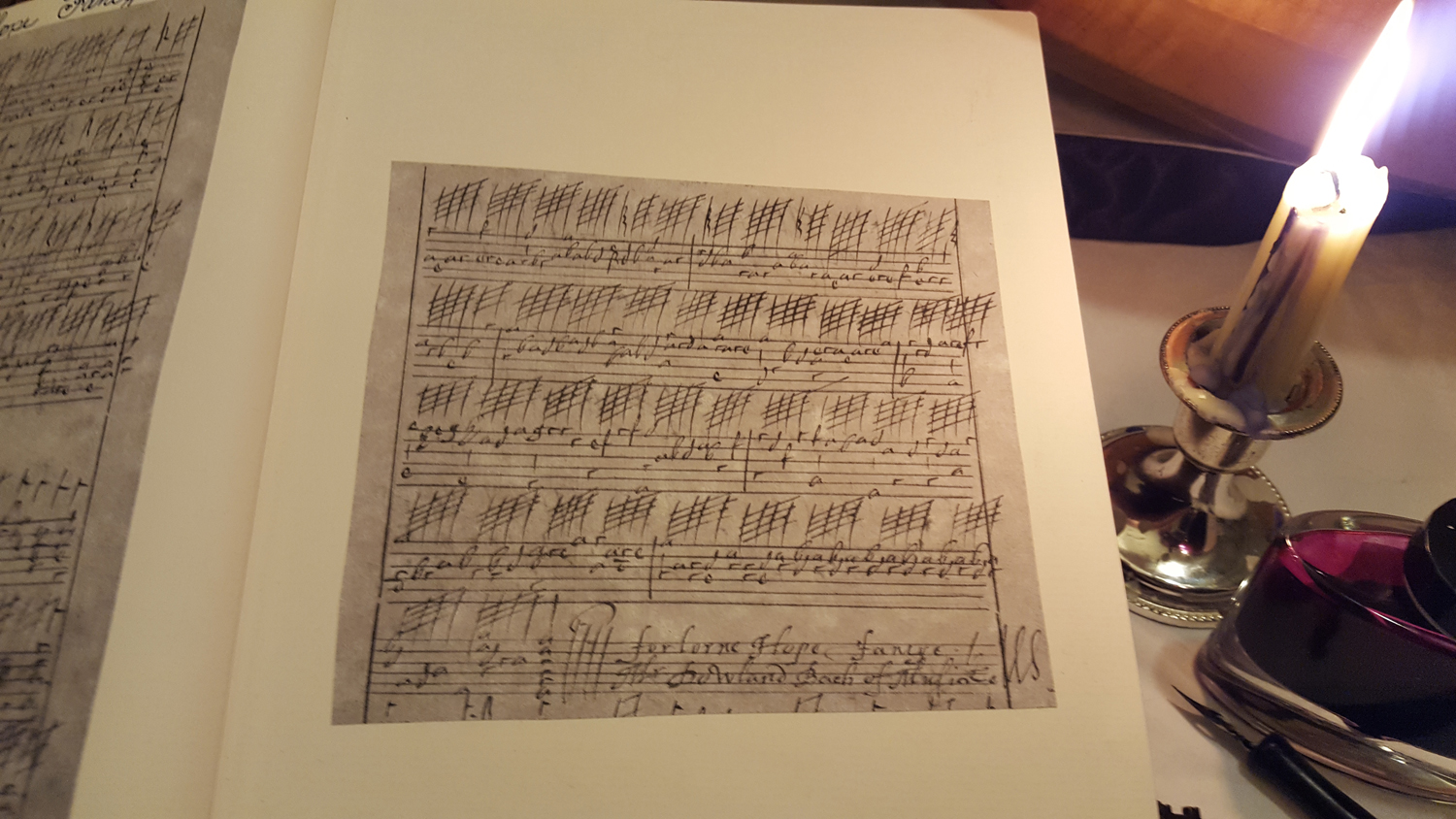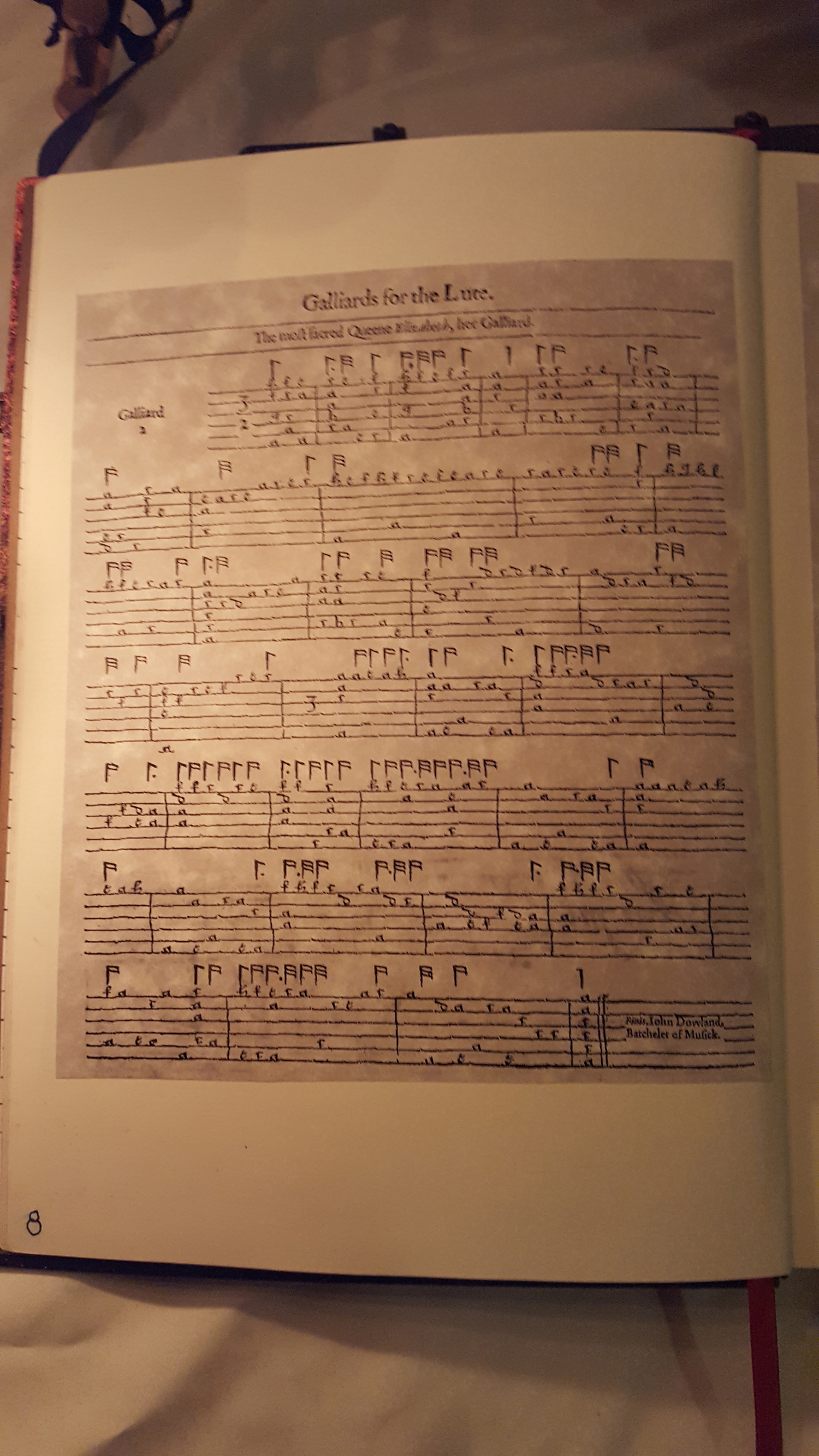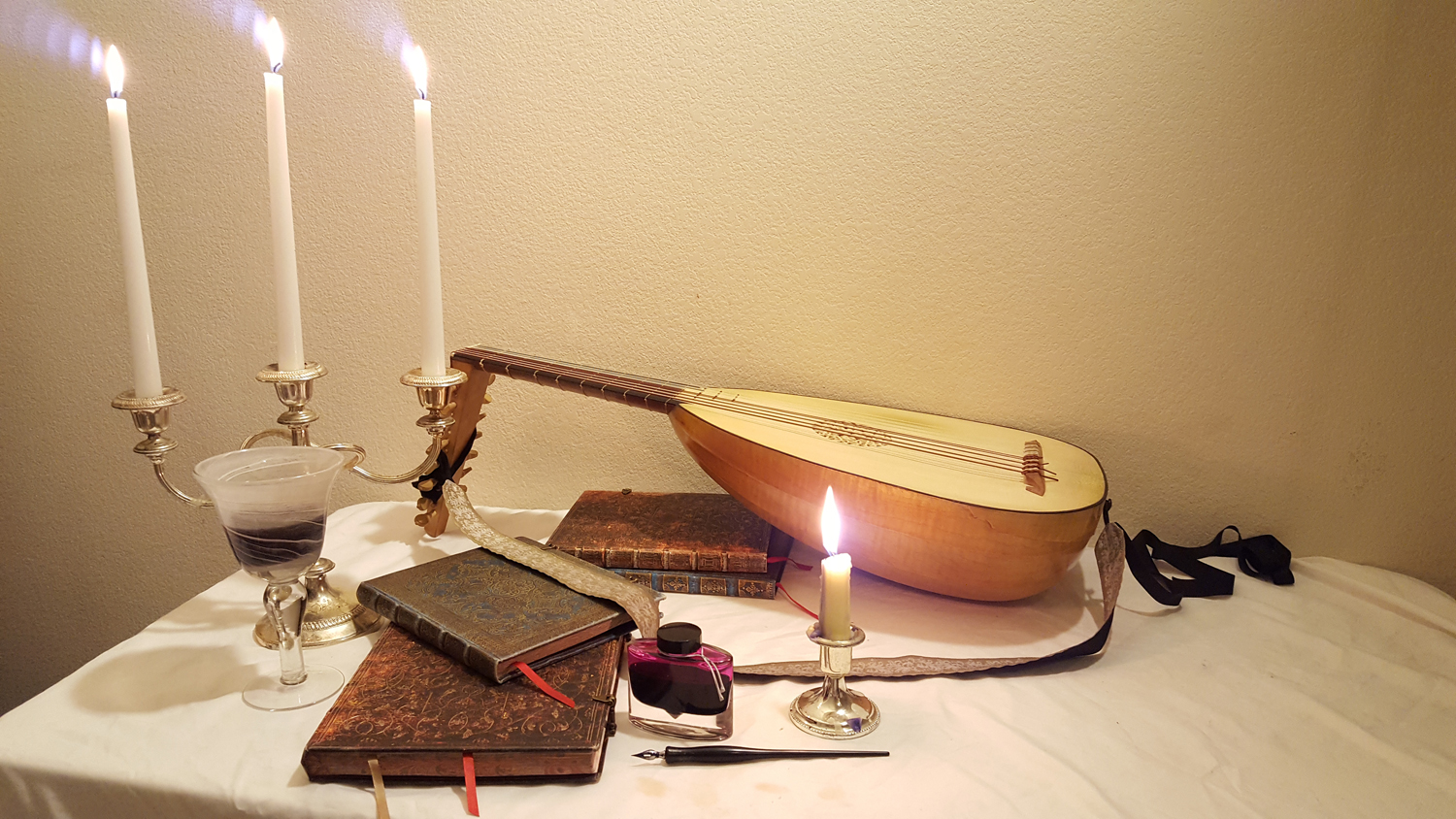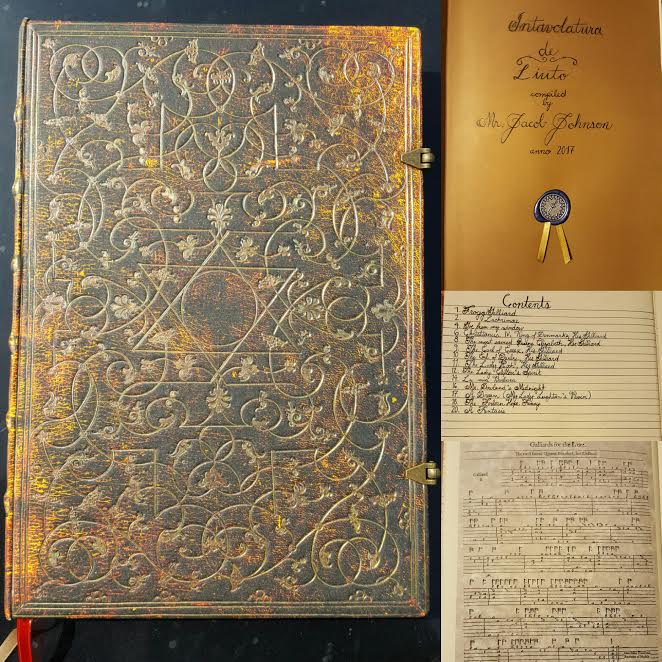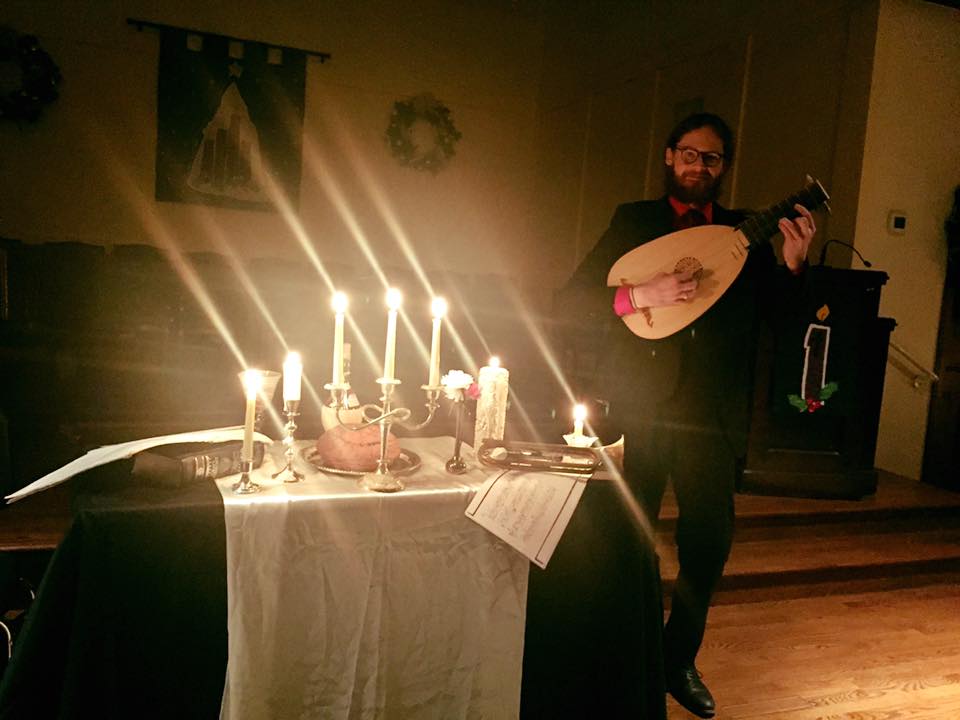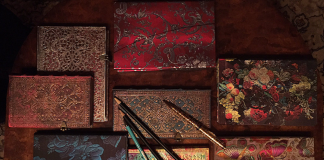Our Peek Inside… series takes a look inside people’s journals to celebrate their imagination and inspire others. Please send us an email if you have a project that you would like to be featured.
This week we are getting to know Jacob Johnson, a musician who specialises in classical lute and guitar. Check out how he incorporates journalling into his passion and career, below!
Name: Jacob Johnson
Age: 31
City: Dallas, Texas, U.S.A.
Occupation: Musician/Music Instructor
Jacob on his Passions and Creating a Lute Book
I currently self-publish my guitar solo and ensemble arrangements on my website, but I also have ongoing performing, recording, and composition projects. I will be recording an album of lute music in the next few months, which will also be available on my website.
One might think that looking at 16th and 17th century texts all day would be incredibly dry, but then you realize that the film Shrek took one of its gags from the Mary Burwell Lute Tutor: “During the heat of the spring a rare lutenist was playing at the foot of a tree in the thickness of a grove, when a nightingale who caught himself, challenged by this celestial harmony, accepted the combat with that indefatigable instrument; and the nightingale endeavoring to answer and go beyond the agreeable sounds of the lute was resolved not to yield first, and so burst [and] fell dead at the feet of his vanquisher, acknowledging by his ruin that the art of man seconded by the lights from above does surpass the wonders of nature.”
My greatest passion has always been music, but I also like to read about a wide variety of topics. I am very interested in history, particularly the Common Practice Era of European art musics (roughly 1600–1900).
As a history and art nerd, I love museums! In fact, I have frequently performed historical music for exhibitions at the Dallas Museum of Art and the Kimbell Art Museum. I do have a few non-musical interests, too.
I really love using fountain pens and trying out different inks, and I enjoy letter writing. When I have the time, I also enjoy drawing and watercolor painting.
I’ve been studying classical music since I was 4 years old. I began on the piano, but in the 3rd grade I started studying the trumpet. I started to teach myself prog/rock/blues/metal guitar in Middle School, but I continued playing the trumpet through Middle- and High School and began my collegiate career as a trumpet performance major at the University of North Texas. While I was at UNT, I heard a classical guitarist practicing a Bach partita. I hadn’t ever considered the guitar a classical instrument, but I suddenly realized that was what I really wanted to do. So, I quit the trumpet department and dedicated myself to the study of the classical guitar (I do still play the trumpet on occasion, though!).
My first guitar teacher gave me a variety of music to learn, from the Renaissance, Baroque, Romantic, and 20th Century style periods, and I really took to the classical guitar well. I particularly loved the music of John Dowland, an English Renaissance composer (and a contemporary of Shakespeare) who was famous for his songs and his lute solos.
At about that time, one of the greatest lutenists on earth, Hopkinson Smith, came to give a concert and masterclass at UT Dallas. My teacher encouraged me to go, and I got my first taste of the early music bug. I was amazed by the sound of the instruments— their timbres sound at once both ancient and very new to my ears. I still wasn’t hooked enough to start studying the lute, though.
Several years later as I was studying the history of the guitar and related instruments as part of a graduate course I was taking, my professor told me that Hopkinson Smith would be coming back to UT Dallas in 6 weeks. At that point I had been studying the lute from a theoretical position, but I had not yet touched one. I’d also been studying a lot of renaissance music, so I was excited to be given the opportunity to play in the masterclass… but I had a crazy thought: why would I want to play lute music on my modern guitar in a lesson with the world’s leading lute specialist? Wouldn’t it be a better use of his expertise to play the music on a lute?
That night I bought a very low quality lute on eBay for $500 and set about learning a few pieces for the masterclass (which went well, in spite of the sheer insanity of learning a new instrument in just 6 weeks…). Since then I have studied in masterclass with some of the greatest minds in the Historically Informed Performance movement, like Michael Craddock, Jakob Lindberg, Ronn McFarlane, and Paul O’Dette.
I’ve filled 3 of the Paperblanks Ultra sized journals in my regular journaling, but I’m still working to fill my first lute book!
Historically speaking, a lutenist wouldn’t have had access to a lot of printed music. Instead, they would have had a journal ruled for tablature (6 lines, just like modern guitar tab), and they would have simply written in the pieces of music they wanted to learn to play. This might mean copying it from someone else’s book, or in some cases their teacher would have written it down for them. Many of these original lute books are preserved in libraries and private collections, and a good number are available in facsimile editions. For some composers like John Dowland, the majority of the music we have comes from these handwritten sources.
The lute pictured in these photos is not the low quality instrument from eBay with which I started, but a fine instrument built for me in 2015/16 by the fantastic San Francisco based luthier Mel Wong (www.blackbirdstringarts.com). The new lute is truly a work of art in and of itself!
I’ve always toyed with the idea of putting my program into a book in a similar fashion to the old lute books, partly to participate in that tradition and partly to minimize the number of books I have to carry with me to a gig. When I saw the Equinox and Grolier journals, I knew I had found a match. I perform from facsimiles of the original sources, so I print the facsimiles on archival paper and use an acid-free spray adhesive to affix them to the page. The Grande format has 240 pages, so it will probably be able to fit between 120 and 150 different pieces. Played without stopping, that would average out to be around 8 hours of music[!].
Part of the fun of studying early music is getting to look at 16th and 17th century manuscripts, letters, and publications. While all of this music is available typeset in the modern style, the aesthetics of the original sources contribute to how I understand and perform the pieces.
As a performer of early music, part of my goal is to bring some essence of the past to my audience. My Grolier Grande lute book enhances my experience with the music both in my private practicing and in public performance. It brings something tactile and beautiful to the ritual that helps me to inhabit the music; I believe that is passed on to my audiences. It lies perfectly flat when it’s open, which is really important for music books. A lot of my performances are lecture recitals in which I discuss the history of the instrument and its music, so I regularly use my Grolier as a visual aid.
Aside from the beauty of the binding, one of the things I like best about Paperblanks is the gsm. As a fountain pen user, it can be difficult to find paper that doesn’t exhibit feathering, ghosting, or bleed-through. Even when I flood the feed on my flex nibs and go for intense line variation, there is no bleed. That’s exactly what I need from a notebook.
Jacob’s Upcoming Projects
I am still scheduling recording sessions for my CD as well as this year’s summer and fall recitals, but I still have one spring recital date left! I will be performing a lute concert on Sunday evening, the 30th of April, 2017 at the First United Methodist Church in The Colony, Texas. If you’re in the area, come say hello! I would be honored to play for you. You can also find my up-to-date performance schedule on my website at www.johnsonguitarstudio.com.
If you like what I’m doing, you can become a Patreon supporter at www.patreon.com/JacobJohnson.
About Paperblanks: 25 years ago, we created Paperblanks to help keep book heritage alive and vital in our modern age, and to offer an inspiring space for people to express themselves. Thanks for joining us on this journey! For more about Paperblanks, go to our website at paperblanks.com.

